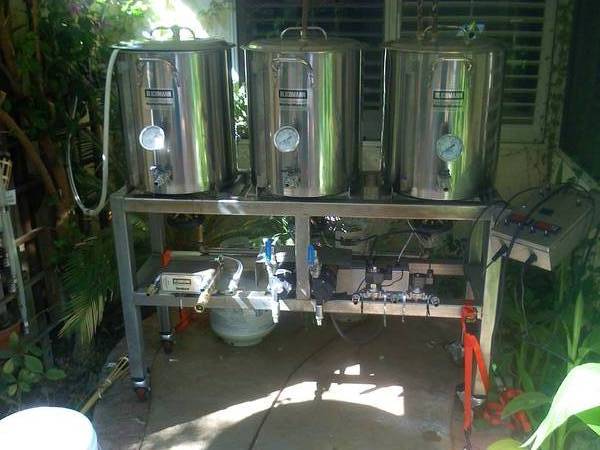I have my Brutus 10 operational in manual bare-bones mode. That is, my burners are assembled and working with manual values. I don't have my pumps and chiller and automatic gas valves and temperature control electronics installed or working yet.
I tested my burners today and they work, but poorly. It took 3.5 hours to boil 13 gallons of water in a keggle. The flame from my 8 inch 20 jet burners seems weak and lackadaisical, flickering about and licking lazily around the 2 inch square steel tubing of the stand frame, and occasionally up the sides of the keg. It's not a concentrated, focused, hot flame like an LP jet burner puts out.
Pressure too low? Not enough oxygen being supplied to the burners? Any ideas on what could be wrong and how to fix it?
I will post some pictures of my stand and burners on photobucket tomorrow.
I tested my burners today and they work, but poorly. It took 3.5 hours to boil 13 gallons of water in a keggle. The flame from my 8 inch 20 jet burners seems weak and lackadaisical, flickering about and licking lazily around the 2 inch square steel tubing of the stand frame, and occasionally up the sides of the keg. It's not a concentrated, focused, hot flame like an LP jet burner puts out.
Pressure too low? Not enough oxygen being supplied to the burners? Any ideas on what could be wrong and how to fix it?
I will post some pictures of my stand and burners on photobucket tomorrow.





































![Craft A Brew - Safale BE-256 Yeast - Fermentis - Belgian Ale Dry Yeast - For Belgian & Strong Ales - Ingredients for Home Brewing - Beer Making Supplies - [3 Pack]](https://m.media-amazon.com/images/I/51bcKEwQmWL._SL500_.jpg)

